Naturally Fermented Lactic Cheese, Observations and theories.
Lessons learned from Sour Milk School.
This is a different kind of post, more a technical focus on a single style. I encourage responses, questions, and thoughts on this style. How do you feel about it, what starters, coagulants do you use, does it seem to be better when made at a certain season, point in lactation cycle?
After teaching seven workshops this year, I feel I have learned more about cheesemaking than in any previous segment of my journey with cheese. Being able to experiment freely, putting to test some of the concepts that have been congealing in my mind has been most rewarding. The challenge of showing up and making cheese in a new space with different equipment and conditions encourages me to stay on my toes. Failure happens and stimulates troubleshooting. Adapting to new milk promotes an approach of careful observation and finding ways to rapidly dial in my process. I want to share some of the insights I have gained and see how you all feel about some theories I have about making lactic cheese, and why they sometimes turn out amazing.
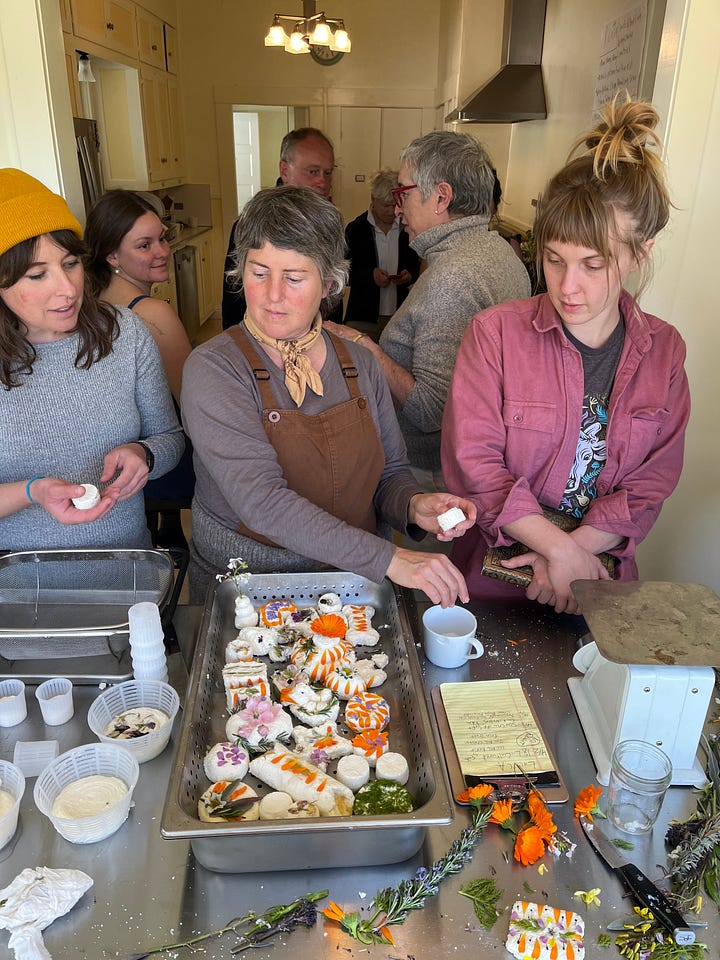
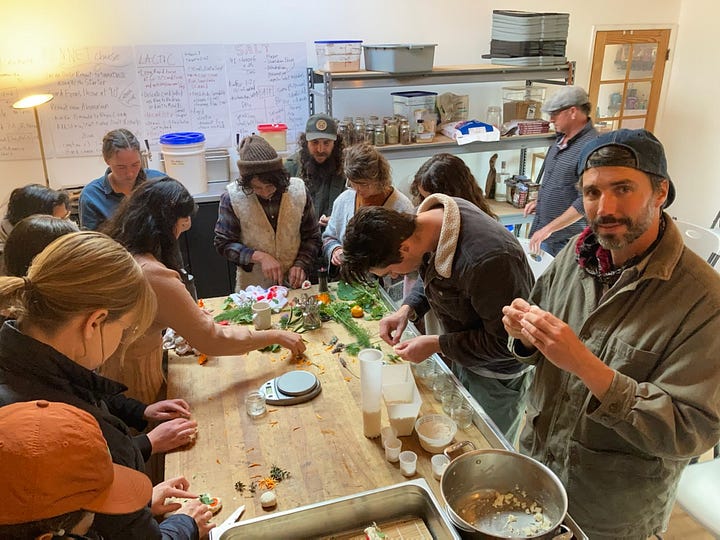
Lactic cheese is defined by its coagulation, which mainly happens through the buildup of acid to the point that milk coagulates, with the help of a tiny dose of rennet. Technically this is called an acid/rennet coagulation. Chevre (from goat milk), and fromage blanc (from cow milk) are two common examples. I think most of us know how good this style can be, fresh. When I get the good stuff, it can be such a simple, yet captivating expression of milk just gone over the rail into the salty seas of spreadable cheese. There are so many mediocre chevre posers out there. What I am looking for is bright and tangy and has a distinct texture of somewhere between smear and crumble. It should be dry enough that you can make a ball of it and not have cheese stuck all over your hands. What I get in America is often not sour enough, and too high in moisture. I think many use a higher dose or rennet, which makes the title “lactic cheese” debatable.
Besides fresh lactic, I really enjoy some of the soft ripened, yeasty or geo rinds. When a light yeast coloration appears at 5-10 day, and the sweet aromas of fruits and bread come in, I love to slice into little lactic cheeses and eat the still fresh interior with little hints of the rind ecologies establishing. But it is not always pleasant, and I’m not sure why that is. Maybe it’s the kind of yeasts, but more likely It is their intensity, and rate of growth combined with the attributes of the cheese (pH, moisture, salt).
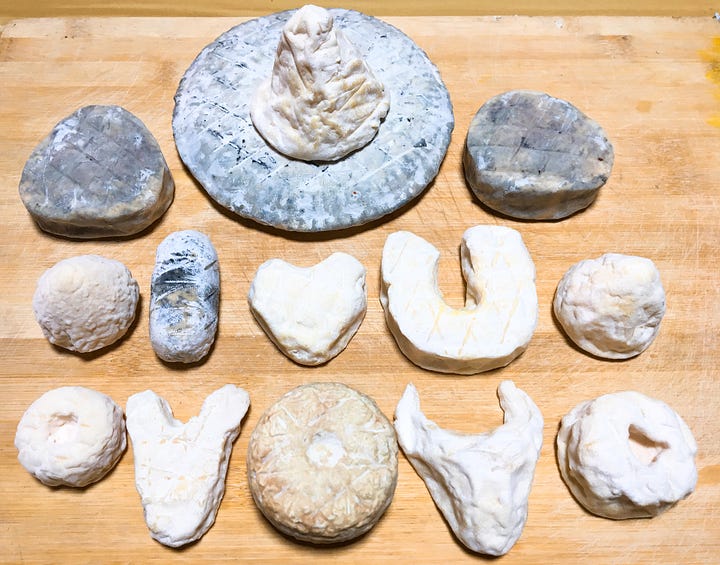
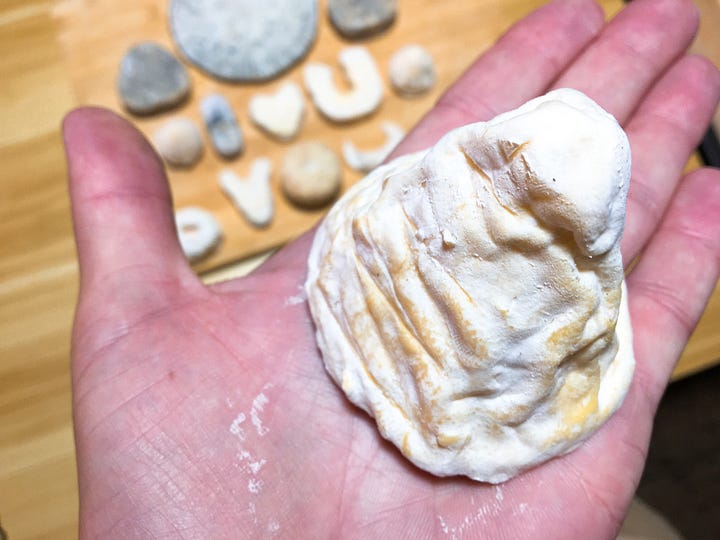
I haven’t made this style much and had never made anything I was happy with until recently. Things began to get interesting when I started using my Quercus Cooperage fir barrel. It is designed more for koji ferments and lacto-fermented vegetables, but I’ve had good results, using it for lactics.
The barrel soaks up whey from one batch and holds it to be released in the next. I am not sure if this is the same as simply adding whey to a batch in stainless, but I think there is more to it than that.
I’ve used it only 3-4 batches at a time, then let it dry between. After use it smells banana yeasty, but once it dries not much appears to grows on it.
It seems logical that if it sits empty for more than 1 day, it wouldn’t be active enough to use as a viable starter (they whey having fermented past its peak activity). The wood vat cheeses that I am familiar with are all daily makes. The one I have seen most is a Sicilian caciocavallo called Ragusano. When it’s make season begins, then have to soak the tinas (coopered wood barrels) in whey. The barrel and fresh warm milk are the starter, only rennet is added.
If I used it daily, I could possibly get a strong buildup of lactic acid bacteria in the wood, and potentially rind microbes along the top and exterior. I’d love to use it in coastal Washington and see if daily use in that climate would allow it to get more of a wild colorful coat on the barrel’s exterior. The vat could come to resemble the cheese: sour milk on the inside, geo and yeast on the outside. Would the cheeses aged from this situation take on a rind that resembles the ecology on the wood vat? Could you store a wood vat in the cheese aging space, to seed it, or create continuity?
I think of the wood (with its whey reservoir) as being one source of starter. I like to use multiple starters and have a wide definition of what can be considered one. For this cheese I’m working with at least 3 or 4:
A. Kefir – harvested when just beginning to coagulate, no longer liquid but not separating into curd and whey. Dosed at .5% of milk volume. Helps add diverse microbes, and rind stuff (yeasts, Geo).
B. Clabber – when is has gelled definitively. Dosed at 1.5% of milk volume. This is the main driver of acidity, has less diversity than Kefir, but packs the punch and is maintained to avoid yeasts. (In a sealed, full jar).
C. Whey – stored in the wood. I am considering adding whey, but it would have to be from the cheese made the day before, or something frozen when at peak activity.
D. My hands, and equipment that cannot/is not sanitized. Probably not much input, but a vector, especially for unwanted microbes. The point is we are never making in a vacuum, there is more to the process than the “starter” you add.
My method at this point is as follows:
1. Get the milk immediately after milking, culture it while udder warm, and pour it into the wood vat that has ideally just been emptied of cheese and is wet with whey.
2. Add salt at .75 - 1% by weight. (Convert literage to grams roughly, multiply by .0075 - .01 = grams of salt)
3. After 3-4 hours, once the Ph has dropped to 6.4, I add 2 drops of rennet, for a full vat of 8 liters. Before I began salting the milk, I used just one drop.
4. Cover with cloth and let sit for 24 hours. If it feels fully coagulated, I cut a # vertically and leave it. After 48 hours (from culturing), a thick layer of whey sits on top of the coagulated or partially cut mass , which is beginning to pull away from the sides of the vat.
5. I scoop the curd out gently with a wide perforated ladle, into cheese cloth sacks, which I hang for 24-48 hours.
It can be day 4-5 by the time the cheese is done, which can be shaped into freestyle little cheeses, or packed into molds. I haven’t ripened it long, due to my mobile ways, but have had mixed results from packing it into 4 oz mason jars and aging little geo rinds for 6-8 weeks.
One of the major problems I have had with natural starter lactics is excessive yeast developing early on, before I have ladled the curd on day 2 (I usually let them sit for 48 after adding culture and rennet). Sometimes gas bubbles go all the way through, but more commonly they are seen on the bottom and sides, where the wood allows oxygen exchange. Sometimes everything looks fine, then on day 4 after draining for two days it comes in. I have had it ruin batches of beautiful chevre, with banana overload. But I’ve hit on what may be a solution. And it came not by changing the equipment, starter, or rennet, but by simply salting the milk when adding the culture.
Salting chevre at culture + rennet is nothing new. I’ve heard several makers discuss it, and some French consultants recommend it. After reading some documents, I gave it a shot, adding less than 1% to the milk. The coagulation went slower, along with the fermentation. I liked how it proceeded. The first batch was a bit too fragile, but bumping up the rennet on the second round gave me the best chevre I have made.
There seems to be some logic to going slow with this style, although my former thinking was that going very rapidly, getting to a low ph quickly, was desirable to cause the demineralization that leads to the texture I desire, and that is “true to style”. This is a fragile, shardy break as it is ladled, and a distinct lactic texture post-draining (described in paragraph #2). Maybe it’s ok if it goes slow as long as it get low enough? Maybe like other styles, a retarded fermentation (one that is intentionally slowed down) leads to deeper flavor development, the possibility of a nuanced, delicious profile? I’ve seen it in cheeses like Ragusano and Kirkham’s Lancashire: a multiday fermentation leading to amazing flavors and aromas in 3-4 day old cheese. In these instances, there is a big delay from the primary make day to the time of salting, 2-3 days. That opens a window for things to go wrong, but like sourdough, it seems a retarded fermentation can lead to a diversity of flavors and textures, some special magic is there that is generally missing in the full throttle approach typical with commercial starters used within the modern paradigm of cheesemaking.
With lactic, the salt up front can potentially prevent unwanted microbes from spoiling things, in my case the ever-present wild yeast. Another approach could be to cultivate the yeasts I do want, with the use of the wood barrel. It tends to smell yeasty after I make with it. I wonder how I may influence the microbes that live on and in it?
It seems to work less as a dwelling for a stable ecology, and more a reservoir for whey to be soaked up into, and mixed with the next batch. But it could be both, and maybe cultivating the right yeasts, even seeding them, would assist.
Another thing to bring into the equation is the climate in which this style is most at home: that of northern coastal France. High humidity, mild temperatures, long wet winters. Like the Puget Sound, or western Oregon. Lactics seem to do better at colder temperatures. They seem to like the slow fermentation at temps perhaps as low as 50-60F. Once it’s hot, they don’t do as well, move too fast, are prone to early yeasting. So maybe these could be more of a winter cheese, in warmer climates. Or we could try to mimic the conditions, by keeping our make space cool. But I’m more about letting the outside conditions in, to be a part of the process, and picking cheese styles that match these conditions. It seems like this is how amazing food happens, by embracing seasonality, and adapting to local climate, weather, soil, and ecology.

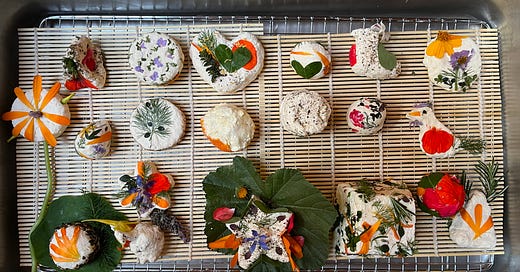



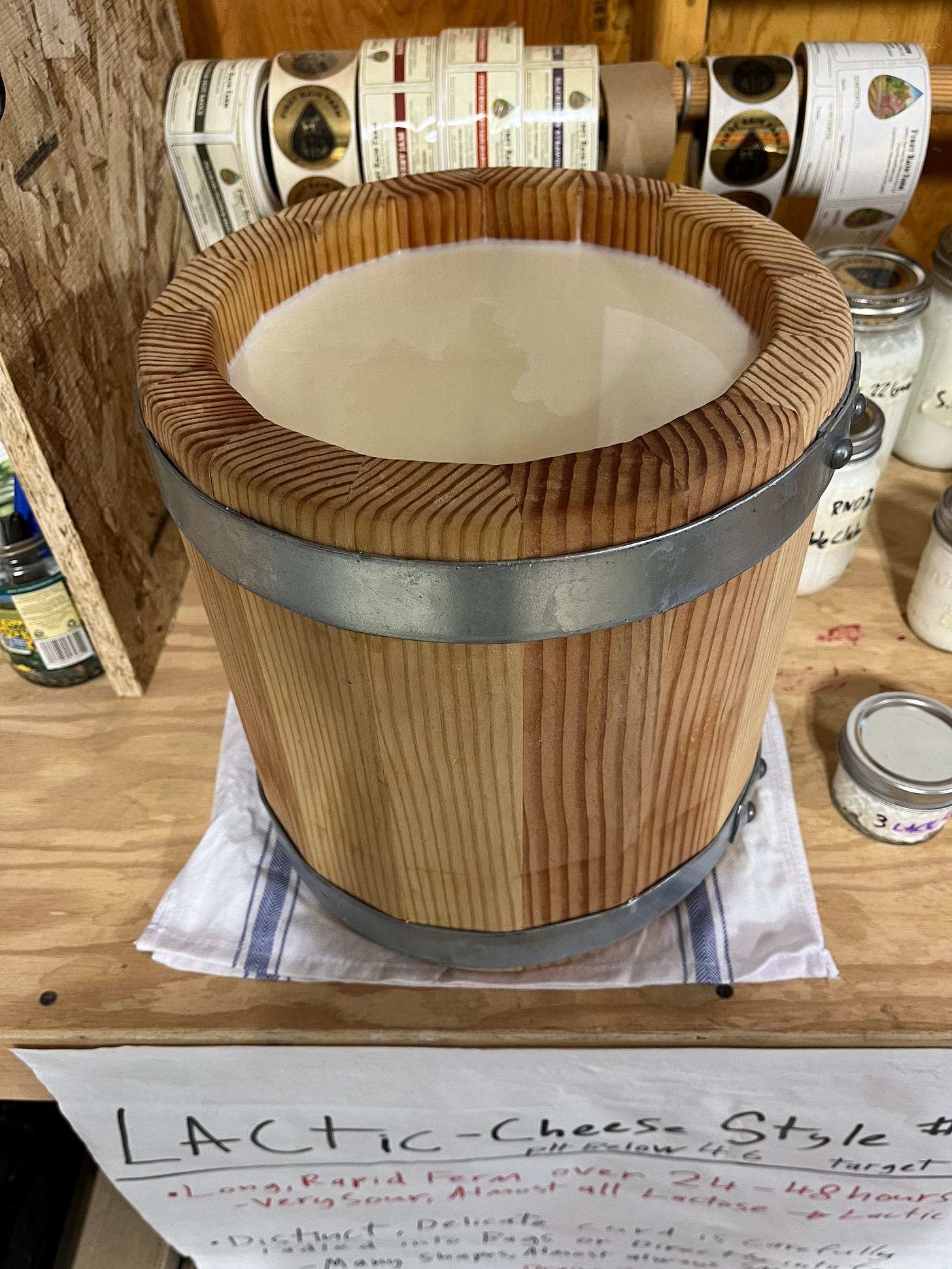
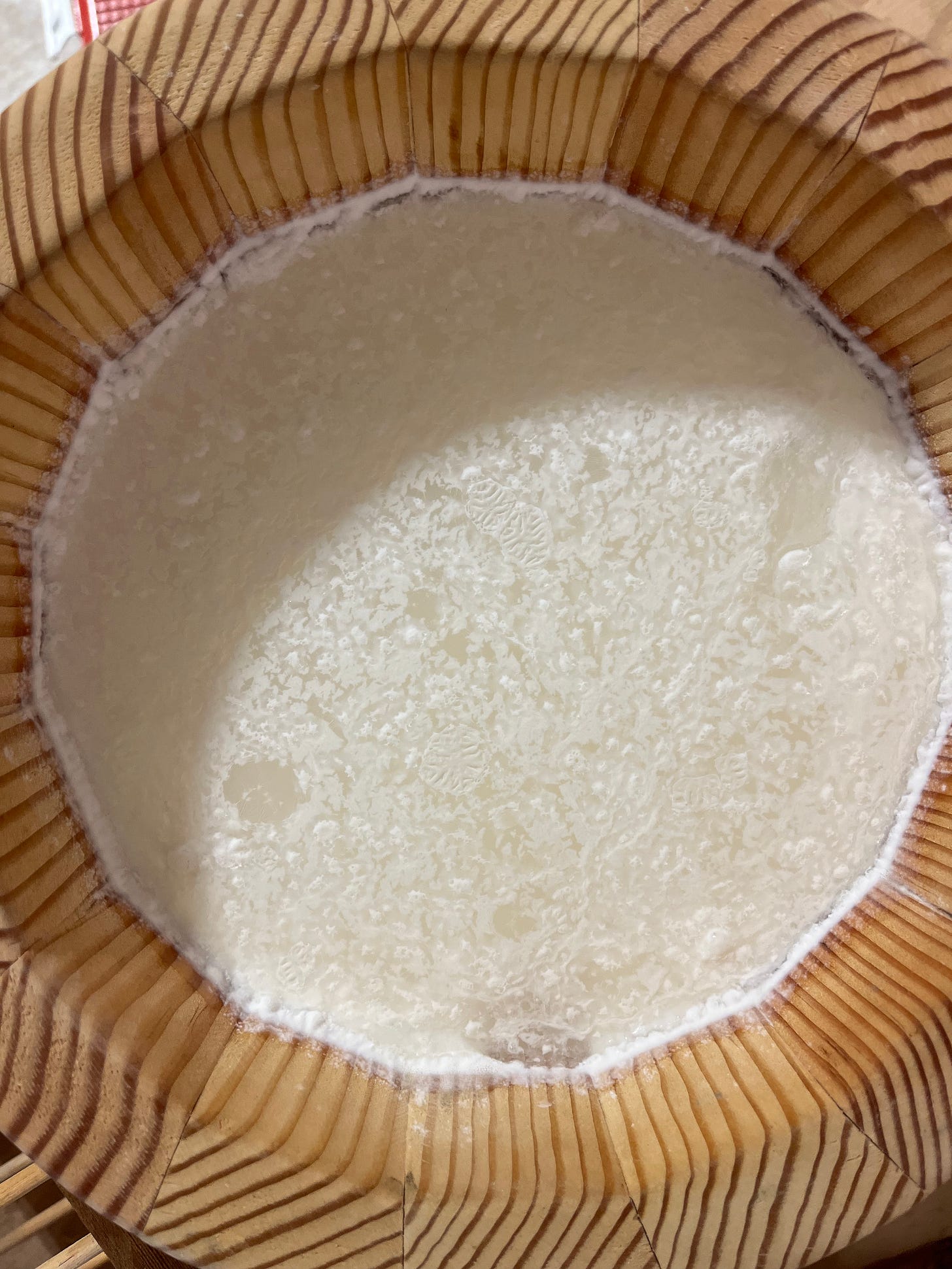
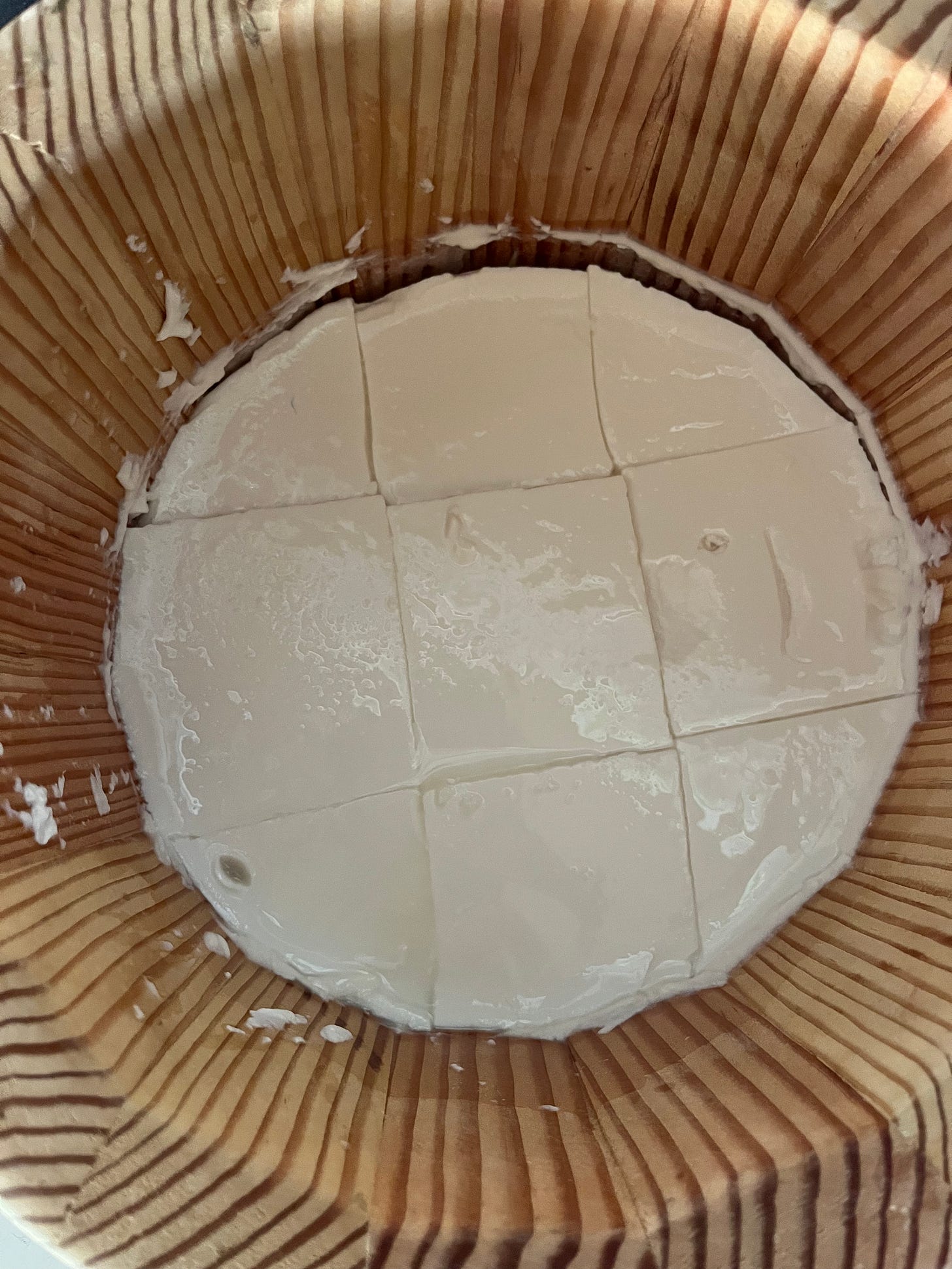
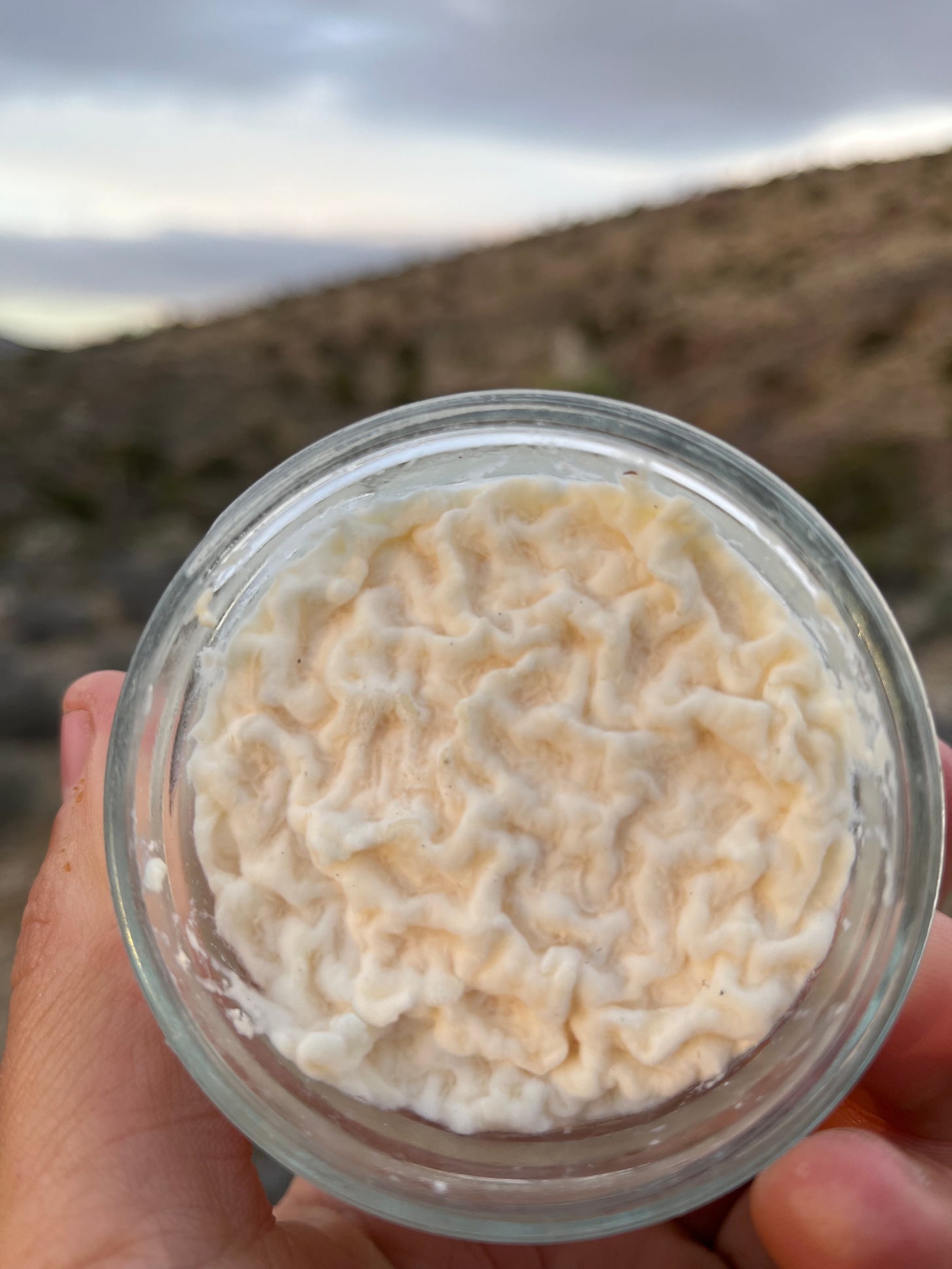
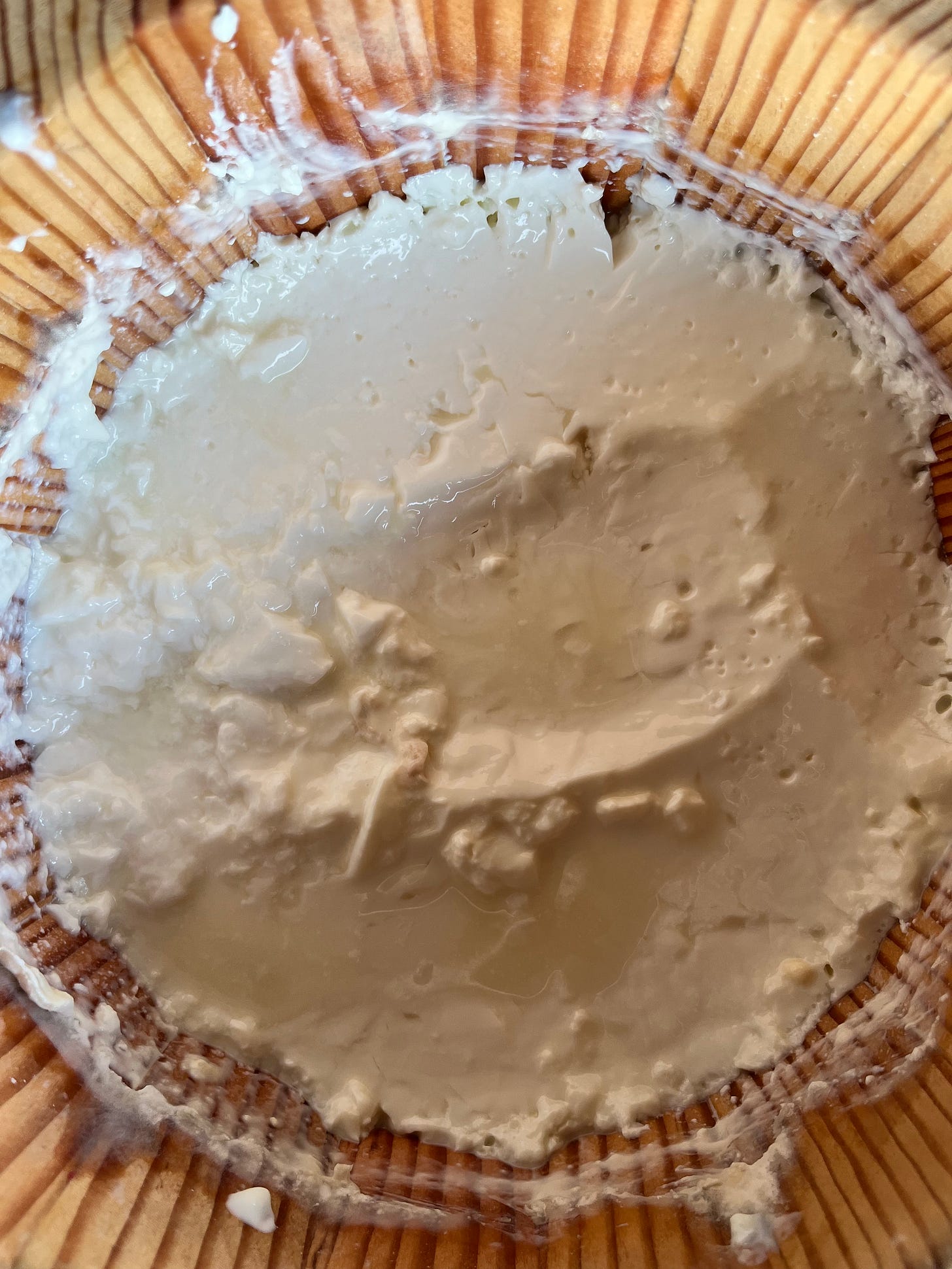
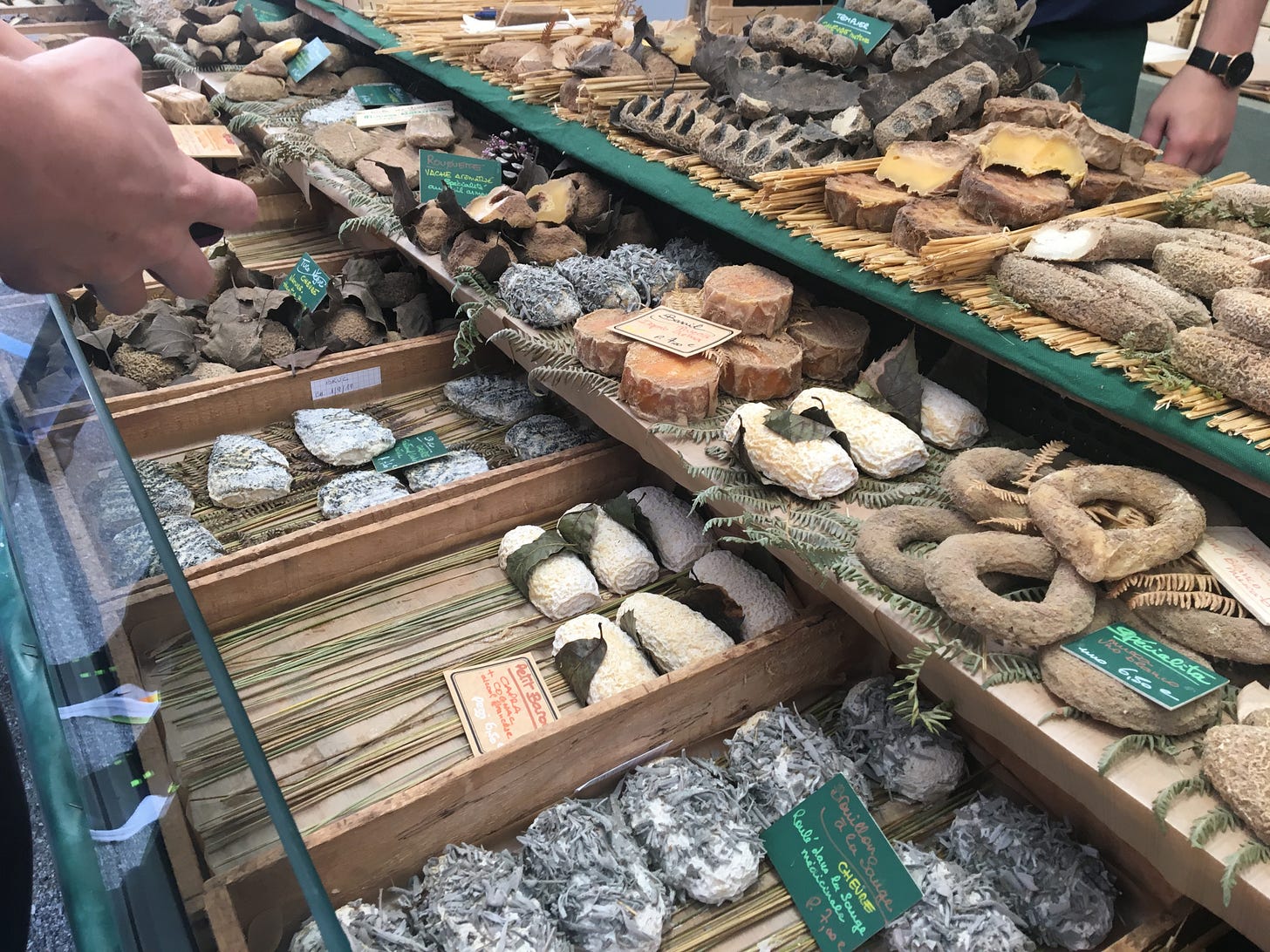
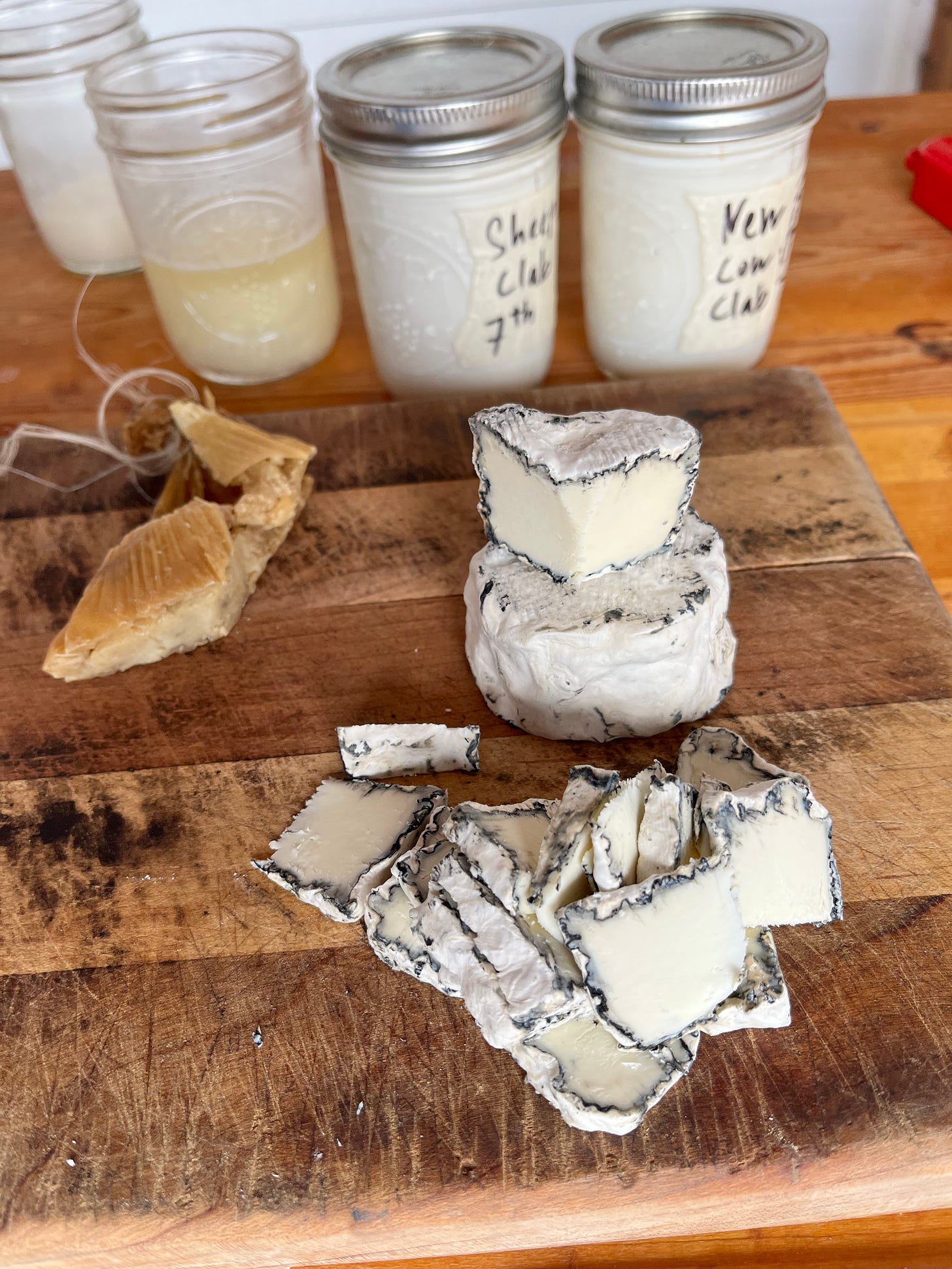
Hi Trevor - great reading this as we start our journey into introducing a lactic cheese into your make! We have a 100% grass-fed cow calf dairy in the south-east of England and this is our second year of milking/cheesemaking. We currently do 3 varieties of rennet cheeses - all made from the same vat just varying degrees of agitation.
However, the lactic cheese essentially gives us an afternoon off! We can culture/rennet after milking and not worry about it for a day (or two or three). We've experimented with a fermentation of between 1-4 days. Afterwards, I fill crottin moulds with a slotted spoon to get a final cheese of around 130g.
I've noticed that we've been getting a bit of variability in the texture of the cheeses. Some a mousse like whilst others are quite dense. I don't think this correlates with how long they have fermented with - nor have I changed a rennet dose. What else may affect the texture?
I've tried to achieve the geo cand fungus whilst the curd has been bathing in the whey - hence leaving it for up to 4 days. However, I haven't seen any evidence of the fungal growth. I've tried this with two different starters: kefir and Flora Danica (freeze-dried).
However, even though the curd that is left to ferment for longer doesn't develop the geo cand fungus in the vat once in the cheese cave (10c and 90% RH) it certainly does produce a much more uniform and delicate rind. Whilst the shorter fermented lactic cheeses seem to adopt the natural rind of my rennet cheeses -- more white/blue penicillium.
I want to avoid a geo cand starter as we want our cheeses to be as natural as possible and the aim will be to use the whey from our lactic cheeses as the starter.
Cheers, Brett
www.slowgrownfarm.co.uk
Reading this has been so helpful. I'm only getting 1L of milk a day from my goats currently, I keep having failures - not sure if its yeast or coliform, it shows up closer to the 24hr mark - full of holes, floating/bloated in the pot. Not sure if maybe the milk needs to be fresh like you mentioned. Just not sure I can make it with only one litre - I use walcoe rennet tablets 1/16th of a tablet for 4L milk makes it hard to get an even smaller dose. I've also been harvesting my kefir at the wrong stage, wow so much learning - going to try it with the salt as well. I'm on the westcoast of BC and it's hot right now here, so maybe i need to change the climate of where it's fermenting. Thank you for the interesting reading and learning.